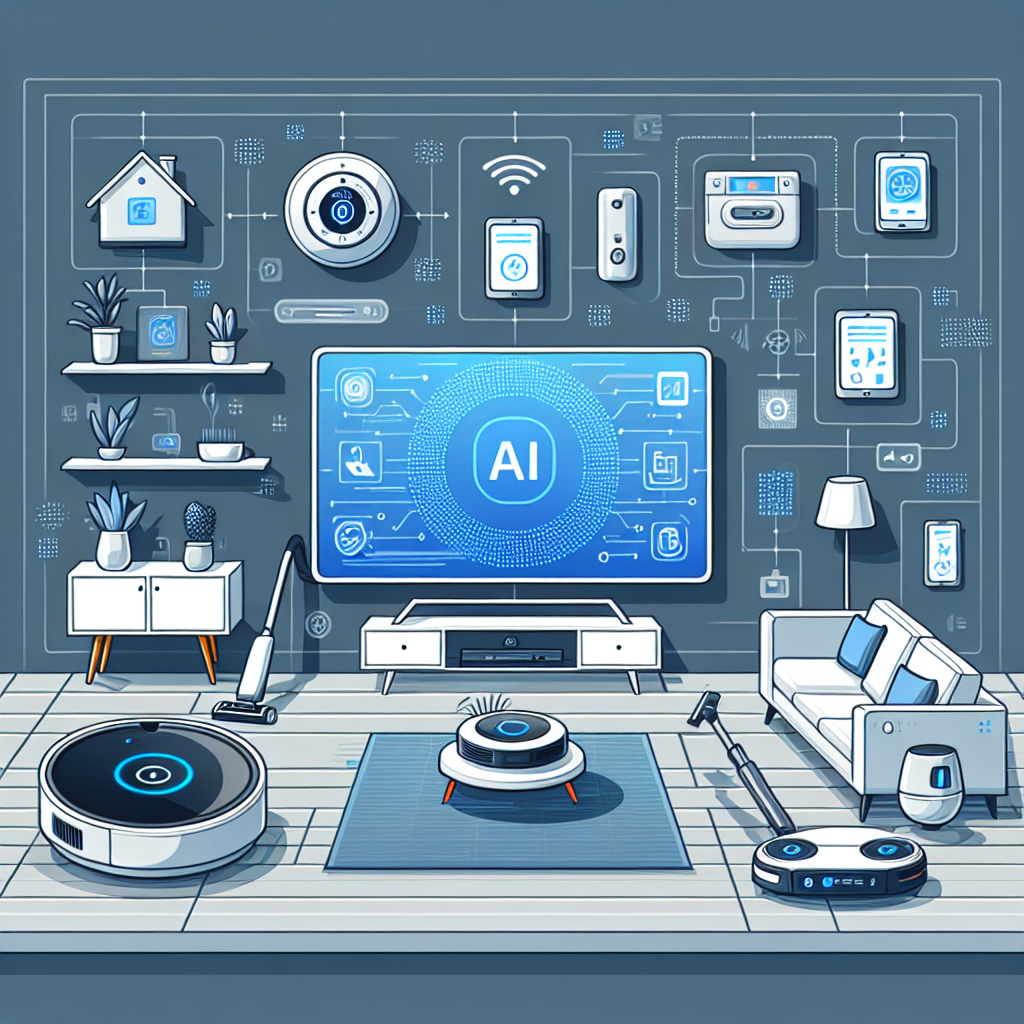The Role of AI Tools in Home Automation
In recent years, there has been a significant increase in the use of artificial intelligence (AI) tools in various aspects of our lives. One area in which AI tools are playing a crucial role is home automation. Home automation refers to the use of technology to control and automate various functions in a home, such as lighting, heating, security, and entertainment systems. AI tools play a key role in making home automation more efficient, convenient, and user-friendly.
AI tools in home automation can be divided into two main categories: voice assistants and smart home devices. Voice assistants, such as Amazon Alexa, Google Assistant, and Apple Siri, use AI algorithms to understand and respond to voice commands. These voice assistants can be used to control various smart home devices, such as smart lights, thermostats, and security cameras. Smart home devices, on the other hand, use AI algorithms to learn and adapt to the user’s behavior and preferences, making home automation more personalized and efficient.
One of the main benefits of using AI tools in home automation is the convenience they offer. With voice assistants, users can control their smart home devices simply by speaking commands, without the need to manually operate switches or buttons. This makes it easier for users to control their home devices, even if they are not physically present in the home. For example, a user can use a voice command to turn on the lights in their living room before they arrive home, or adjust the thermostat temperature without having to get up from the couch.
AI tools in home automation also offer increased efficiency and energy savings. Smart home devices can learn the user’s behavior and preferences over time, and automatically adjust settings to optimize energy usage. For example, a smart thermostat can learn when the user is typically at home and adjust the temperature accordingly, leading to energy savings and a more comfortable living environment. Similarly, smart lighting systems can adjust the brightness and color temperature of lights based on the time of day and the user’s preferences, saving energy and creating a more pleasant atmosphere.
Another benefit of using AI tools in home automation is increased security and safety. AI-powered security cameras can analyze video footage in real-time and alert the user to any suspicious activity, such as a stranger approaching the front door or a fire breaking out in the kitchen. AI algorithms can also detect patterns of behavior that may indicate a security threat, such as someone trying to break into the home or a leak in the gas pipe. By using AI tools in home automation, users can have peace of mind knowing that their home is secure and safe.
In addition to convenience, efficiency, and security, AI tools in home automation also offer increased customization and personalization. Smart home devices can learn the user’s preferences and habits over time, and adjust settings accordingly. For example, a smart lighting system can create custom lighting scenes based on the user’s activities, such as a “movie night” scene with dimmed lights and a “reading” scene with bright lights. AI tools in home automation can also integrate with other smart home devices and services, such as smart speakers, music streaming services, and weather forecasts, to provide a seamless and personalized experience for the user.
FAQs
1. What are some popular AI-powered voice assistants for home automation?
Some popular AI-powered voice assistants for home automation include Amazon Alexa, Google Assistant, and Apple Siri. These voice assistants can be used to control various smart home devices, such as lights, thermostats, and security cameras, using voice commands.
2. How can AI tools in home automation save energy?
AI-powered smart home devices, such as thermostats and lighting systems, can learn the user’s behavior and preferences over time, and automatically adjust settings to optimize energy usage. For example, a smart thermostat can adjust the temperature based on the user’s schedule, leading to energy savings and a more comfortable living environment.
3. How do AI tools in home automation enhance security?
AI-powered security cameras can analyze video footage in real-time and alert the user to any suspicious activity, such as a stranger approaching the front door or a fire breaking out in the kitchen. AI algorithms can also detect patterns of behavior that may indicate a security threat, such as someone trying to break into the home or a leak in the gas pipe.
4. How can AI tools in home automation improve convenience?
AI-powered voice assistants, such as Amazon Alexa and Google Assistant, can be used to control smart home devices simply by speaking commands, without the need to manually operate switches or buttons. This makes it easier for users to control their home devices, even if they are not physically present in the home.
In conclusion, AI tools play a crucial role in making home automation more efficient, convenient, and user-friendly. By using AI-powered voice assistants and smart home devices, users can enjoy increased convenience, efficiency, security, and personalization in their homes. As AI technology continues to advance, the possibilities for home automation are endless, and the benefits for users are sure to grow.

